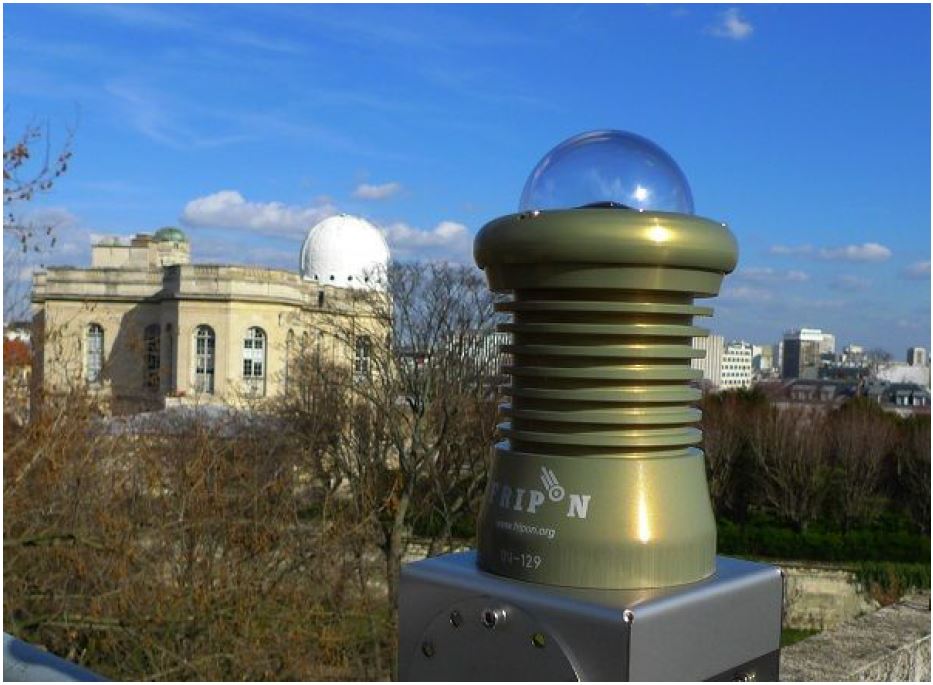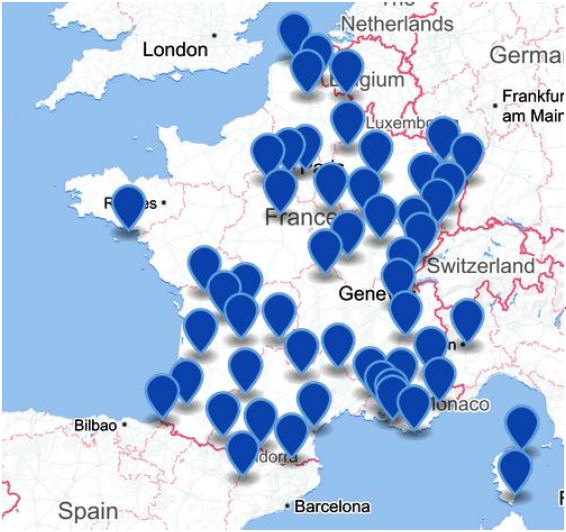Observatoire de Paris – 61 avenue de l’Observatoire – 75014 Paris – France – www.obspm.fr
Tuesday May 31st, 2016 marks the official launch of FRIPON, a unique interconnected network to search for meteorites. Eventually comprising 100 cameras spread out all over France, FRIPON introduces a night and day 360° watch of the sky. Born from the joint scientific expertise of Observatoire de Paris, of Muséum national d’Histoire naturelle, of Université Paris-Sud, of Université Aix-Marseille and of CNRS, this network aims to detect meteorite falls, measure their trajectories and estimate their strewnfields so that field search campaigns can be organized.
The explosion on February 15, 2013 of a large meteorite above the Russian town of Chelyabinsk was a real shock, which triggered public authorities and public opinion worldwide into realizing that such an event could happen again anywhere and at any time.
Most of the fireballs and smaller meteors usually disintegrate totally upon entering the terrestrial atmosphere, transformed into dust before they even reach the ground. However, it sometimes happens that a larger incoming chunk of extraterrestrial material will produce a meteorite that falls on Earth. The number of meteorites falling in France yearly is estimated as around ten, but no more than one every ten years is actually observed. Surprisingly, the rate of observed meteorite falls was five times higher in the 19th century. Several reasons may be found for this, but one thing is clear: most of the meteorites falling in France are lost forever!

A comparison of meteorite falls observed in France in the 19th and the 20th century. © MNHN
Based on this observation, scientists François Colas (Senior scientist at Observatoire de Paris and CNRS), Brigitte Zanda (Associate Professor at Muséum national d’Histoire naturelle) and Sylvain Bouley (Associate Professor at Université Paris Sud), have been making use of their complementary expertise since 2013 to work towards the setting up of FRIPON, an acronym for « Fireball Recovery Interplanetary Observation Network ».
Funded at the level of 550.000 euros by Agence nationale de Recherche (ANR – National Research Agency), this project aims to deploy a large-scale detector (eventually 100 cameras and 25 radio receivers) over the whole French territory. Data from weather radars and seismographs will also be used to characterize the events detected by the network.
The principle
On average, three to nine cameras are set up per region, at a distance of 50 to 100 kilometers from one another. Roofs of observatories, universities, natural history and other museums and scientific outreach associations… the camera locations are varied and the program has close to 150 participants so far.
Easy to install and to use, the cameras are equipped with a fisheye lens enabling a 360° view of the sky on a single image. They are connected to computers running software that was developed specifically to analyze images and detect luminous events. When a detection takes place, a signal is sent to the mainframe located in Université Paris-Sud, which collects data in real-time from the whole network. The entire computing chain is now functional, making it possible to launch a field search campaign within about a day.
With over 60 cameras now in working order in France, FRIPON is operational. Its extension abroad has already started. Real time images can be obtained from the www.fripon.org website. «This setup allows us to detect incoming objects in real time and from several angles, making it possible to compute their trajectories in 3D, estimate their speed and determine their potential fall location with a precision of the order of a few hundred meters,» says François Colas, the Principal investigator of the FRIPON project at Observatoire de Paris, within the Institut de mécanique céleste et de calcul des éphémérides.
Objectives
This monitoring above the French national territory comes with multiple aims: one is to determine the intensity and the origin of the extraterrestrial matter flux, and another to eventually collect fallen meteorites, in both cases in order to better understand the Solar System.
Collecting such raw material direct from space may bring invaluable information about the composition of the Solar System in its primitive state, and about planets and their evolution, including the Earth. “Our planet is made of the same material as some of these meteorites, but it was transformed through geological processes. Having evolved little since the formation of the Solar System, the meteorites that are currently falling hold clues to the nature of the primitive Earth.” emphasizes Brigitte Zanda, meteoriticist at the Muséum national d’Histoire naturelle.
“Upon penetrating the Earth’s atmosphere, the object disintegrates into debris. The spatial distribution of these chunks over the strewn field usually defines a search area of more than 20 square km.” points out Sylvain Bouley, planetologist at Paris-Sud university.
In practice, the FRIPON working organization will be taken over in the field by the Vigie-Ciel network, run by the Muséum national d’Histoire naturelle and to be launched in 2017. This citizen science program will make it possible to set up field search parties both quickly and efficiently, with the help of volunteers who will have previously been trained in the framework of Vigie-Ciel.

FRIPON camera installed on the roof of the Observatoire de Paris. © François Colas / Observatoire de Paris / IMCCE

Location of the 60 cameras in operation by the end of May 2016, the completion of the
network being planned for the end of 2016. Notice the camera installed at the Torino
Observatory, first in the upcoming Italian network. © FRIPON
To find out more: www.fripon.org.

